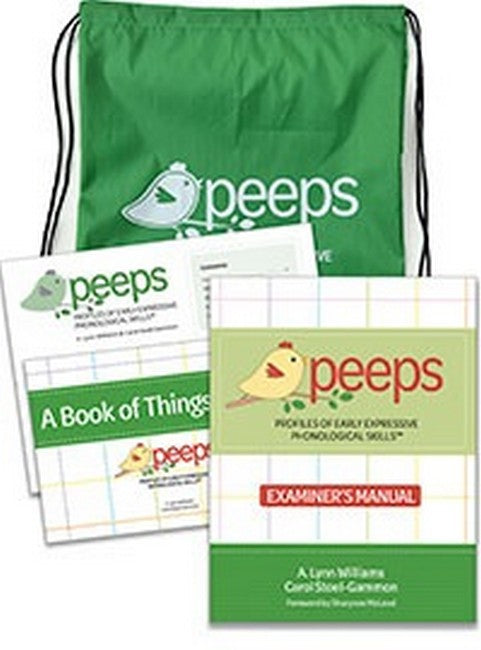Profiles of Early Expressive Phonological Skills (PEEPS (TM)) Assessment Kit
Profiles of Early Expressive Phonological Skills (PEEPS (TM)) Assessment Kit
SKU:9781681254418
Share
Phonological development is linked with a child’s later success with language and literacy, but tests of early phonological skills are often not sensitive enough for the youngest children. That’s why clinicians need PEEPS™, a comprehensive assessment of early phonological skills developed specifically for toddlers 18–36 months. Created by leading experts in early phonological development and speech sound disorders, PEEPS helps speech-language pathologists detect speech and language delays early, so children can receive the intervention and support they need to be effective communicators on track for academic achievement.
Why PEEPS?
- Developmentally appropriate. Unlike similar tools, PEEPS is specially developed to screen young children and uses elicitation techniques and vocabulary words that are appropriate for this population.
- In-depth assessment of an overlooked skill set. Early phonological skills are often not assessed, even though they affect early lexical development. PEEPS is the tool clinicians need to analyze the key components of phonological development, including phonetic inventory, syllable structure, accuracy of consonant production, and error patterns.
- Accurately identifies delays. Because most phonological measures aren’t designed for the young age range, young children may be overidentified as struggling with phonological skills—or a wait-and-see approach is taken with these children, which can delay starting early intervention. PEEPS helps accurately evaluate children struggling with phonological skills, so they can receive support as early as possible.
- Quick, convenient, and flexible. PEEPS gives clinicians a comprehensive picture of early phonological skills in less than 20 minutes. The kit includes the full PEEPS assessment (60 words) and a shorter PEEPS screener (20 words) that helps determine if in-depth testing with the full PEEPS is warranted.
How PEEPS Works
To conduct either the full PEEPS or the screener, the clinician will:
- Present a stimulus to the child to elicit each word on the PEEPS word list. The clinician may point to a small toy, a body part or article of clothing, or an illustration in the included board book, A Book of Things.
- Transcribe the child’s speech production onto the test form.
- Complete the scoring and summary page to create a profile of the child’s phonological development.
- Use this profile to help determine if the child is developing within expected limits or displaying delays or red flags that warrant intervention.
PEEPS is easy to administer. The Examiner’s Manual guides clinicians step by step through the process, and includes access to a helpful video in which the authors clearly demonstrate how to deliver PEEPS.
The PEEPS Kit includes:
- Examiner’s Manual
- Pack of 10 forms
- A Book of Things stimulus board book
- Drawstring bag for examiner to use for physical stimuli
- Demo video
About the Author
About the Author
Couldn't load pickup availability


